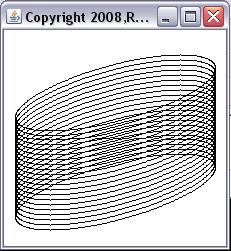Learn the fundamentals of the vector dot product in both 2D and 3D. Learn how to update the game-math library to support various aspects of the vector dot product. Learn how to write 2D and 3D programs that use the vector dot product methods in the game-math library.
Table of contents
Preface
This module is one in a collection of modules designed for teaching
GAME2302 Mathematical Applications for Game Development at Austin
Community College in Austin, TX.
What you have learned
In the previous module, you learned how to write your first interactive 3D
game using the game-math library. You also learned how to write a Java programthat simulates flocking behavior such as that exhibited by birds and fish and
how to incorporate that behavior into a game. Finally, you examined three otherprograms that illustrate various aspects of both 2D and 3D animation using the
game-math library.
What you will learn
This module is the first part of a two-part mini-series on the
vector dot
product . By the time you finish both parts, you will have learned
- the fundamentals of
the vector dot product in both 2D and 3D,
- how to update the
game-math library to support various aspects of the vector dot product, and
- how to write 2D and 3D programs that use the vector dot product for
various applications such as the back-face culling procedure that was used toconvert the image in
Figure 1 to the image in
Figure 2 .
Figure 1
A 3D image before back-face culling.

Figure 2
The 3D image after back-face culling.

Viewing tip
I recommend that you open another copy of this module in a separate
browser window and use the following links to easily find and view the Figuresand Listings while you are reading about them.
-
Figure 1 . A 3D image before back-face culling.
-
Figure 2 . The 3D image after back-face culling.
-
Figure 3 . Two vectors with their tails at the origin, program DotProd2D02.
-
Figure 4 . Dot product of two vectors with the same orientation in 2D.
-
Figure 5 . Dot product of two vectors with the same orientation in 3D.
-
Figure 6 . Dot product of a 3D vector with an identical vector.
-
Figure 7 . Dot product of vectors with opposite orientations.
-
Figure 8 . The dot product of perpendicular vectors in 2D.
-
Figure 9 . A general formulation of 2D vector perpendicularity.
-
Figure 10 . Another interesting 2D case of perpendicular vectors.
-
Figure 11 . A general formulation of 3D vector perpendicularity.
-
Figure 12 . A pair of perpendicular 3D vectors.
-
Figure 13 . Another pair of perpendicular 3D vectors.
-
Figure 14 . GUI for the program named DotProd2D01.
-
Figure 15 . A screen shot of the output from the program named DotProd3D01.
-
Figure 16 . Six (magenta) vectors that are perpendicular to a given (black) vector.
-
Figure 17 . Output from Exercise 1.
-
Figure 18 . Output from Exercise 2.
-
Figure 19 . Output from Exercise 3.


